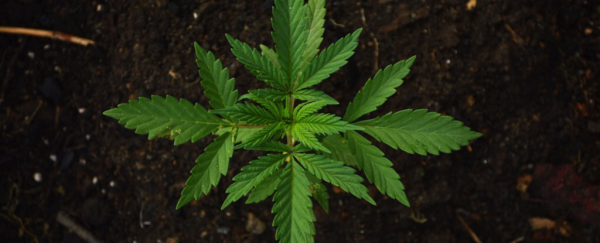The marijuana industry boasts hundreds of different cannabis strains, all of which promise a unique 'high'.
Traditionally, this is thought to depend on each strain's individual levels of tetrahydrocannabinol (THC) and cannabidiol (CBD), two major active chemical compounds found in the plant.
THC is regarded as the 'psychoactive' compound, while CBD is more about the body high - some strains are bred to have more of one and some strains have more of the other.
But while there's an abundance of anecdotal evidence to back up the claim that the highs are different, a new study reveals the chemical breakdown between all these varied strains is actually rather similar.
Despite their unique and quirky street names, it appears that many strains of cannabis have virtually identical levels of THC and CBD.
"A high abundance compound in a plant, such as THC or CBD, isn't necessarily responsible for the unique medicinal effects of certain strains," explains chemist Elizabeth Mudge from the University of British Columbia (UBC) Okanagan.
The study examined the chemical compounds of 33 cannabis strains from five licensed providers.
The findings show that while different levels of these compounds are being sold under different names, there is very little to distinguish them as "strains".
The research shows that most strains, regardless of their origin or name, have the same amount of THC and CBD.
What's more, it appears that when producers try to breed highly potent strains of cannabis, they end up changing the genetic diversity of the plant and not the THC or CBD levels.
"People have had informal breeding programs for a long time," says study co-author and chemist Susan Murch, also from UBC.
"In a structured program we would keep track of the lineage, such as where the parent plants came from and their characteristics. With unstructured breeding, which is the current norm, particular plants were picked for some characteristic and then given a new name."
This doesn't necessarily undermine the idea that different strains might give you different psychoactive effects. It just goes to show that varying levels of THC and CBD may not be the agents of this change.
Cannabinoids like THC and CBD are a class of chemical compounds found in marijuana. But while licensed producers of marijuana are only required to report THC and CBD levels, there are hundreds of other known cannabinoids also present in the plant.
Interestingly, Mudge says their study did find differences between the strains when it comes to a number of previously unknown cannabinoids.
The authors think these newly discovered compounds, present in low quantities, could be what changes the human physiological response to the drug - and not THC and CBD as commonly thought.
This means that when marijuana users are shopping for the perfect cannabis strain, they are being given chemical compositions that may have no effect on their physiological response.
In other words, consumers could be blindly choosing a product, with very little information to support their final decision.
"Understanding the presence of the low abundance cannabinoids could provide valuable information to the medical cannabis community," says Mudge.
The authors hope that their research is a first step towards establishing a more accurate classification system, which will provide consumers with better information about what they are truly buying into.
The study has been published in Scientific Reports.
